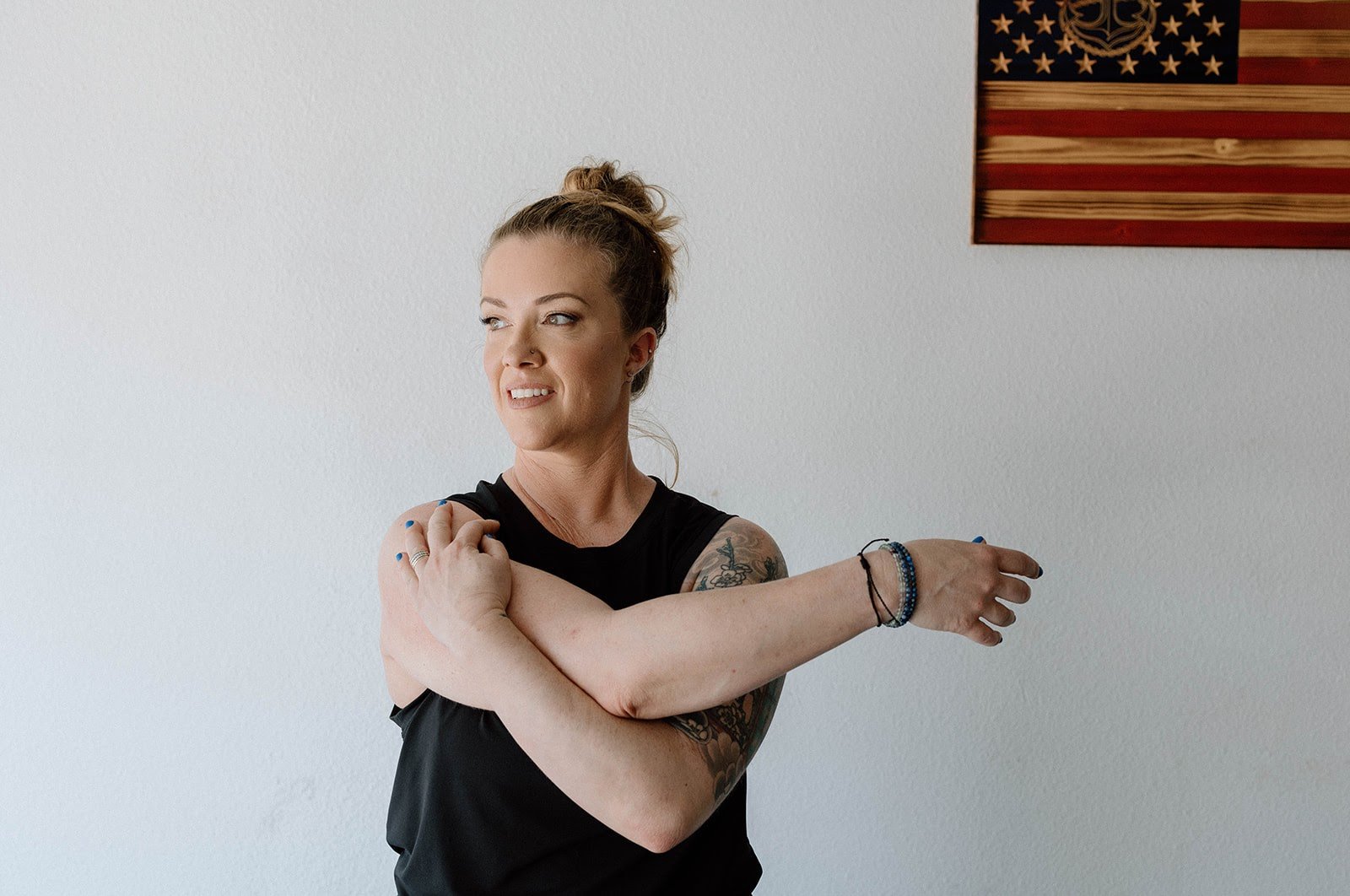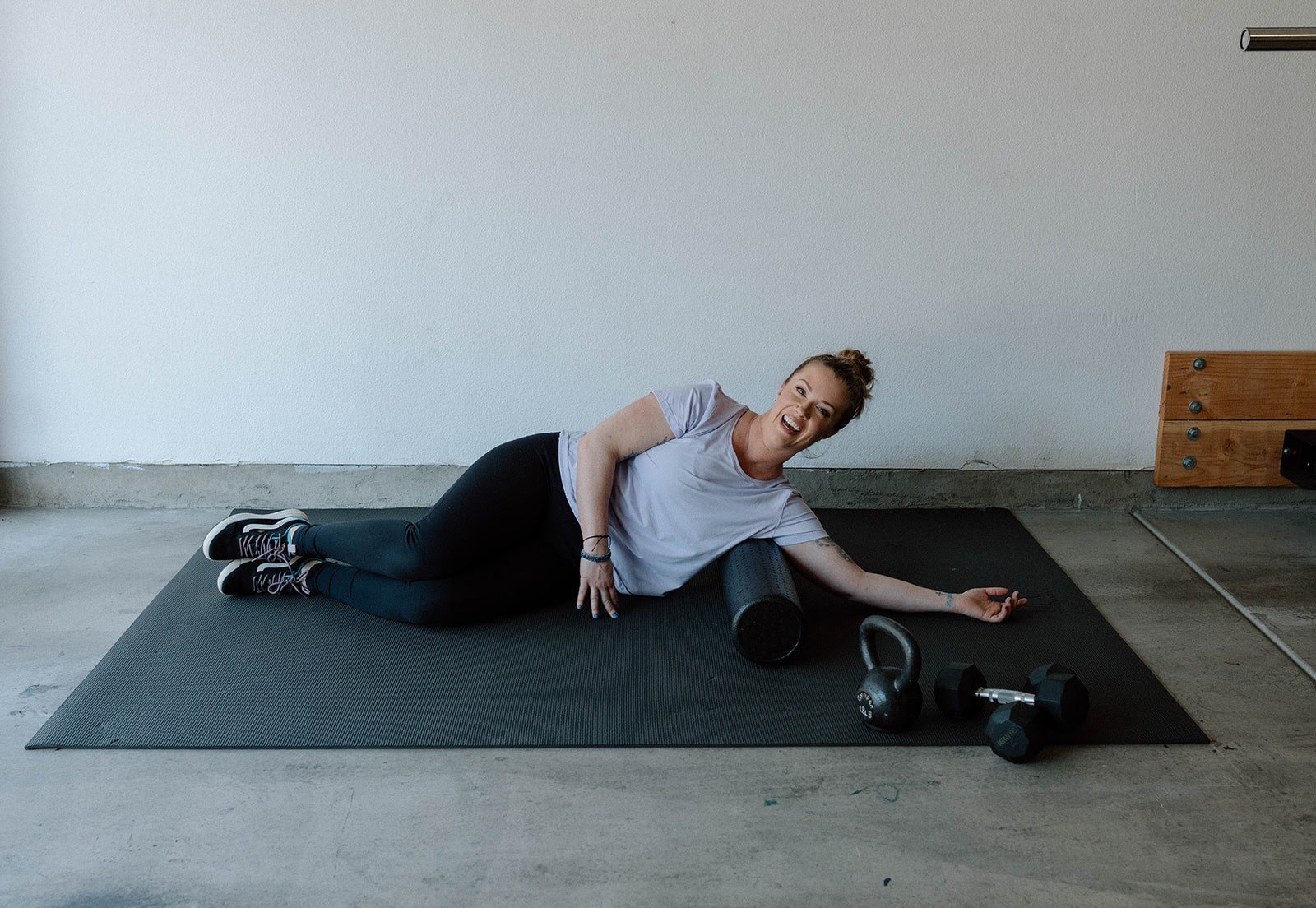
STORY TIME
Building a Home Workout Sanctuary: Designing for Motivation and Wellness
Curate a motivating playlist and invest in a good sound system. Music enhances the workout experience. Additionally, consider ambient lighting to create a calming yet energizing atmosphere.
In today’s fast-paced world, the concept of a home workout sanctuary has gained immense popularity. More than just a space to exercise, it's a personal haven where motivation, fitness, and well-being converge. Designing this space strategically not only enhances motivation but also promotes holistic wellness. In this blog, we will explore the art of building a home workout sanctuary that not only inspires physical activity but also nurtures mental and emotional well-being.
1. Creating a Functional Fitness Zone
When designing your home workout sanctuary, consider the functional aspects. Think about versatile equipment like resistance bands, dumbbells, and stability balls.
2. Embracing Nature Indoors
Natural elements enhance motivation. Design your workout space near a window to let in natural light and fresh air. Utilize indoor plants and greenery.
3. Personalizing Your Space
Make your workout sanctuary uniquely yours. Personalize it with motivational quotes, vibrant colors, or artwork that inspires you.
4. Integrating Smart Technology
Smart fitness gadgets are all the rage. Integrate fitness apps, virtual classes, and wearable devices for a connected experience.
5. Mindful Spaces for Recovery
Incorporate a relaxation corner with items like meditation cushions, essential oils, or calming decor. Designing a mindful recovery space appeals to individuals seeking a holistic approach to fitness.
6. Functional and Stylish Storage Solutions
Effective storage is crucial for a clutter-free space. Use stylish organizers and shelves to keep equipment tidy and accessible.
7. Incorporating Cardio Elements
If space allows, consider incorporating cardio elements like a jump rope area or a compact treadmill. Cardio workouts are a fitness trend on the rise.
8. Music and Ambiance
Curate a motivating playlist and invest in a good sound system. Music enhances the workout experience. Additionally, consider ambient lighting to create a calming yet energizing atmosphere.
9. Online Community Integration
Consider integrating your space with online fitness communities. With the rise of virtual fitness, creating a space that caters to online workout classes and community engagement connects your sanctuary with the digital fitness world.
10. Regular Content Updates
Keep your audience engaged by regularly updating your space and sharing your fitness journey. Regular updates not only keep your space fresh but also position you as a trendsetter in the evolving home fitness landscape.
In conclusion, building a home workout sanctuary is not just about arranging fitness equipment; it’s about creating an environment that fuels motivation and promotes overall wellness. By incorporating these design elements, your home workout sanctuary becomes a hub of inspiration, fostering not only physical health but also mental and emotional well-being. So, embark on this fitness design journey, and watch as your sanctuary transforms into a source of endless motivation, helping you achieve your fitness goals and enhancing your overall quality of life.
Using Rewards and Incentives to Boost Workout Motivation: A Fitness Game-Changer
Consistency is key in reinforcing positive behavior. Set up a consistent reward system where you receive incentives for completing your workouts or reaching specific goals. Regular reinforcement strengthens the connection between your efforts and the rewards, making your motivation more sustainable.
Motivation is the engine driving our fitness endeavors, but sometimes, even the most dedicated individuals can experience a slump in enthusiasm. That’s where rewards and incentives come in, acting as potent catalysts to reignite your workout motivation. In this blog, we will delve into the psychology behind utilizing rewards and incentives in your fitness journey, understanding how they can revitalize your approach and elevate your achievements.
Understanding the Psychology of Rewards
1. Dopamine and Pleasure Principle
Rewards trigger the release of dopamine, a neurotransmitter associated with pleasure and reward. When you receive a reward or experience a pleasurable event, your brain releases dopamine, reinforcing the behavior that led to the reward. By associating rewards with your workouts, you create a positive feedback loop, making exercise more enjoyable and motivating.
2. Positive Reinforcement and Habit Formation
Rewards function as positive reinforcement, strengthening the connection between an action (like exercising) and a positive outcome (receiving a reward). Over time, this reinforcement solidifies the habit, making it more likely that you'll continue exercising consistently. Incentives provide that extra push needed to turn exercise into a regular part of your routine.
Types of Rewards and Incentives
1. Intrinsic vs. Extrinsic Rewards
Intrinsic rewards come from within; they are the internal satisfaction derived from accomplishing a task. Extrinsic rewards, on the other hand, are external motivators like prizes or recognition. Both types can be powerful motivators.
2. Immediate vs. Delayed Rewards
Immediate rewards are those you experience right after completing a workout, like the satisfaction of finishing a challenging routine. Delayed rewards are those you plan to receive in the future, such as treating yourself to a new workout outfit after reaching a specific fitness milestone. Balancing immediate and delayed rewards keeps your motivation consistent over time.
Effective Use of Rewards and Incentives
1. Personalize Your Rewards
What motivates one person might not work for another. Personalize your rewards based on what excites you. It could be anything from a cheat meal at your favorite restaurant to a relaxing massage. Tailoring your rewards to your preferences ensures they hold significant value, enhancing their motivational impact.
2. Set Clear Milestones
Establish specific, achievable milestones that lead to your larger fitness goal. For example, if your goal is to lose 20 pounds, set smaller milestones for every 5-pound loss. Rewarding yourself for reaching these milestones makes the overall goal seem more attainable and keeps you motivated throughout the journey.
3. Use Social Accountability
Incorporate social accountability into your rewards system. Share your goals with friends or join online fitness communities where you can celebrate your achievements together. Knowing that others are aware of your progress adds a layer of accountability, making your rewards even more satisfying.
4. Be Consistent with Rewards
Consistency is key in reinforcing positive behavior. Set up a consistent reward system where you receive incentives for completing your workouts or reaching specific goals. Regular reinforcement strengthens the connection between your efforts and the rewards, making your motivation more sustainable.
Maximizing Your Fitness Potential
Rewards and incentives are not just indulgences; they are strategic tools to boost your workout motivation and drive lasting change. By understanding the psychological mechanisms at play and tailoring your rewards to your preferences, you can turn your fitness journey into an exciting and rewarding adventure. So, whether you’re aiming to run a marathon, master a challenging yoga pose, or simply lead a healthier lifestyle, consider integrating rewards and incentives into your fitness strategy. Celebrate your achievements, no matter how small, and acknowledge your progress along the way. Embrace the power of rewards and incentives, and watch how they transform your workout motivation, propelling you toward your fitness goals with renewed vigor and enthusiasm.
Setting SMART Fitness Goals and Achieving Them: Empowering Your Fitness Journey
Balancing ambition with achievability ensures sustainable progress. Setting realistic goals prevents burnout. Content about realistic fitness goals connects with those seeking practical, achievable fitness milestones.
Setting fitness goals isn’t just about sweating it out; it’s a strategic process that can define your success. In the dynamic landscape of fitness trends, aligning your objectives with SMART criteria ensures you're not just chasing dreams but creating a tangible, achievable plan. In this blog, we delve into the power of setting SMART fitness goals to empower your fitness journey.
Defining SMART Fitness Goals
1. Specific: Precision in Purpose
Specificity gives your fitness goals clarity. Replace vague objectives like "get fit" with precise targets like "complete 30 minutes of high-intensity interval training (HIIT) five days a week." Specificity enhances your visibility by resonating with focused fitness objectives.
2. Measurable: Tangible Progress Tracking
Measuring progress keeps you motivated. Incorporating quantifiable metrics such as weight loss or workout duration allows for objective tracking. Measurable goals create content relevant to online searches like "measurable fitness goals," ensuring your strategies align with trending topics.
3. Achievable: Ambition Meets Reality
Balancing ambition with achievability ensures sustainable progress. Setting realistic goals prevents burnout. Content about realistic fitness goals connects with those seeking practical, achievable fitness milestones.
4. Relevant: Goals Aligned with Passion
Relevance ensures your goals matter to you personally. Content about meaningful fitness goals connects with individuals searching for goals that resonate with their passions, enhancing your online impact.
5. Time-bound: The Power of Deadlines
Setting a timeframe instills urgency. Specific deadlines create purpose, encouraging consistent action. Incorporating terms like "time-bound fitness goals" ensures your content aligns with current online searches.
Strategies for Achieving SMART Fitness Goals
1. Break Down Goals into Achievable Steps
Divide your SMART goals into smaller, achievable steps. Content about fitness milestones plans ensures your content reaches those looking for structured approaches, enhancing your online visibility.
2. Craft a Detailed Fitness Plan
A well-structured plan eliminates guesswork. Specifics in your plan, like workout types and meal details, appeal to searches for "fitness plans," increasing your visibility among those seeking detailed fitness strategies.
3. Engage Professional Expertise
Collaborate with fitness professionals. Content about fitness expert guidance connects with individuals searching for professional assistance, establishing your credibility and relevance.
4. Foster Accountability
Accountability is a powerful motivator. Content about fitness buddy support resonates with those seeking supportive fitness communities, enhancing your content’s relevance.
5. Embrace Flexibility in Fitness
Flexibility ensures adaptability. Content about adaptive fitness goals connects with those looking for dynamic fitness approaches, enhancing your relevance in the ever-changing fitness landscape.
Celebrating Achievements and Setting New Goals
Every achievement, no matter how small, deserves recognition. Content about fitness goal celebrations resonates with individuals seeking positive reinforcement, increasing your visibility among those celebrating fitness milestones.
As you achieve your SMART fitness goals, remember, your journey is a source of inspiration for others. By focusing on your goals and journey, you not only shape your body but also contribute positively to the fitness conversation.
Accountability Partners: The Power of Working Out with a Friend
Having a workout partner provides an immediate support system. On days when motivation wanes, your partner can uplift you, offering encouragement and reminding you of your goals. Their presence alone can turn a potentially lackluster workout into a dynamic, motivating session.
Embarking on a fitness journey can sometimes feel like a solitary endeavor. However, the path to health and wellness doesn’t have to be walked alone. One of the most effective strategies to stay motivated, committed, and consistent in your workouts is by having an accountability partner—a friend who shares your fitness goals and supports your efforts. In this blog, we’ll explore the profound impact of having an accountability partner, delving into the ways in which a workout buddy can enhance your fitness experience.
Shared Commitment, Shared Success
1. Mutual Encouragement
Having a workout partner provides an immediate support system. On days when motivation wanes, your partner can uplift you, offering encouragement and reminding you of your goals. Their presence alone can turn a potentially lackluster workout into a dynamic, motivating session.
2. Increased Accountability
When you know someone is counting on you, you’re less likely to skip a workout. The sense of accountability to your partner creates a strong commitment, making it harder to succumb to excuses. This accountability fosters consistency, a key factor in achieving long-term fitness goals.
Enhanced Motivation and Enjoyment
1. Friendly Competition
A healthy dose of competition can fuel your workouts. Friendly challenges with your partner, whether in the form of who can run faster or do more push-ups, add an element of fun and motivation. The drive to outperform each other in a supportive manner can lead to increased effort and enjoyment.
2. Shared Progress Celebrations
Having someone witness and celebrate your achievements magnifies their significance. When you reach a personal milestone, having a friend there to share in your joy enhances the experience. Likewise, celebrating your partner’s accomplishments strengthens your bond and reinforces your shared commitment to fitness
Mental and Emotional Support
1. Stress Reduction
Working out with a friend creates an opportunity to unwind and share experiences. Exercise is a natural stress reliever, and having a friend to talk to during and after workouts can further reduce stress levels. A workout session becomes not just physical activity but also a chance to de-stress and connect.
2. Boosted Confidence
A supportive workout buddy provides a safety net, enabling you to try new exercises or routines you might have hesitated to attempt alone. The confidence derived from this support often translates into improved performance and a willingness to challenge yourself, ultimately leading to better results.
Creating Lasting Bonds
1. Deepened Friendship
Sharing the challenges and victories of a fitness journey creates a unique bond. The mutual dedication to health and fitness strengthens your friendship, giving you a shared purpose beyond the workout itself. This deepened connection often extends to other areas of your lives, enhancing the overall quality of your friendship.
2. Accountability Beyond the Gym
The accountability and support don’t end when the workout does. An accountability partner can also help you make healthier choices outside the gym, from meal planning to weekend activities. Having a friend who shares your commitment to well-being positively influences various aspects of your lifestyle.
Accountability partners transform the solitary pursuit of fitness into a shared, enriching experience. The motivation, encouragement, and emotional support provided by a workout buddy can make the difference between inconsistency and steady progress. Together, you not only achieve your fitness goals but also create enduring memories and friendships. So, whether you’re aiming to lose weight, build strength, or simply lead a healthier life, consider teaming up with a friend. With an accountability partner by your side, your fitness journey becomes not just a destination but a rewarding and enjoyable voyage, celebrated with every step.
What Pisses You Off?
I launched A Healthful Life because I kept overhearing the same problems about working out from my community and I wanted to be able to help solve those problems.
Training gives me the ability to hear about everything that pisses you off.
I launched A Healthful Life because I kept overhearing the same problems about working out from my community and I wanted to be able to help solve those problems.
Hands down, the two biggest problems I heard were about having a consistent workout routine and being able to adjust that routine based off of the chaos of life.
Followed quickly by frustration of results not sticking around. You can push yourself to get them but as soon as you do, you realize how burned out you are and then you stop.
Not being able to drop weight, not being able to GAIN weight, not being able to workout when you want, not seeing a difference from your workouts , that’s just to name a few.
Working out is not a perfect practice.
It is the practice of patience.
All the change you want isn’t going to happen instantaneously.
Especially the change you want to see stick around. That kind of change takes time and consistent effort.
It also takes you not giving up on yourself because during that time, you’re going to have imperfect moments and even more moments of frustration.
It’s time to remind yourself of how far you’ve come, not how far you have to go.
Don’t quit now. If you’re frustrated or over it, sick of showing up, take the time to remind yourself of what you’ve done and why it’s worth it.


















